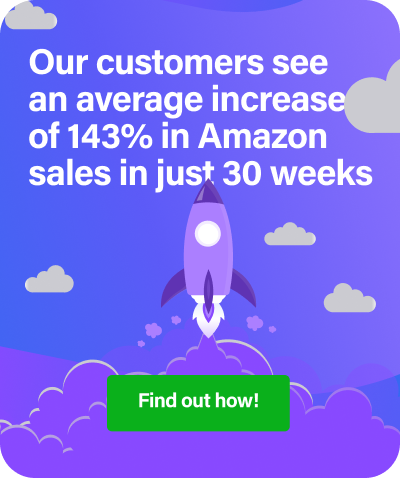Guest post by Gareth from Yeeply
Setting up your own ecommerce website is a great way to push your sales and business. Having your own website can really push your offering to the next level. The benefits that come with it are significant. You can use it to really build your brand by having full control of how it appears to customers. By controlling all aspects of your own website you are in full control of your brand awareness and brand equity. You can offer your customers features such as customer service chat bots or product customisation. You can add videos or content wherever and whenever you like. You can then align all of this to your brand to increase its consistency and thus equity.
You can also gather more information about your customers and use this to your advantage. All the data about your website traffic goes directly to you. The more data you gather about your customers, the more you can adapt your offering to increase its effectiveness. Using your website you can also create a mailing list to gather even more data. Furthermore, all the traffic that goes to your site has value not only for you but for other businesses. You can then cash in on this in the form of advertising. Many of the skepticisms about setting up an ecommerce website involve the cost. Hopefully this article addresses the concern of cost on all levels.
So, what are the options? Here are five that will suit you whatever your budget.
1. Outsource
If you don’t have the expertise, time or motivation to develop the website yourself, you can outsource the development. You contact website developers, outline the features that you want your website to have, they will give you a price and upon confirmation they will begin to develop your website. Of course, you need to find the right developers to suit your project. Things to look out for include their location, their spoken language and their previous work. If you can maintain good contact with them throughout the process, and they have developed a similar website before to a high standard of quality, then you are sure to be satisfied with the result.
Finding the right developers can be easier said than done. Consulting with a developer marketplace for example can make the process quick and simple. So, the process appears to have many benefits for you, but what is the cost? Well, the cost can vary depending on a number of factors, which include your website’s planning stage and its features. If you are unsure, you can use a website cost calculator to find out.
2. Free website creators
There are a vast array of websites that offer free web building services. Some of the most reputable ones include Wix and Weebly. Others often require a monthly fee, while many of the free options offer a paid upgrade option and impose storage restrictions for their free services. Furthermore, with free options you are often required to include the host’s name in the domain. That said, the monthly fees for paid website building and hosting options can still be cheaper than developing a fully functional website using another method.
For ecommerce, depending on your product range you are likely to want a large amount of available storage for all your products photos and other things such as videos etc. Also, if you are serious about your business, the money spent in the short term on monthly fees could be saved in the long term by going all out and spending on your own website immediately. Of course this may not always be an option, and so free website creators or monthly subscription based ones can offer a cheaper, short term solution while you build a customer base. Furthermore, maintenance of these websites can be cheaper and less time consuming than managing your own fully developed website.
3. DIY
Of course, you may be in a position where you don’t require outside services for the development of your website, as you have the expertise yourself. Alternatively, you may not have the expertise but you may have the desire to learn how to code. This option is for those not only with the motivation to learn how to develop a website but also for those who have the time. These skills are hugely valuable and can therefore save you a lot of money. If you need a website immediately, then it may be worth considering either skipping this option altogether, or considering the previous option of a free or monthly paid website tool while you learn.
If you decide to learn, it is important to consider that there are several programming languages. The main ones are HTML, CSS, PHP and Javascript. Each have their own pros and cons and so it is worth considering these in detail with the requirements of your website in mind. You also need to consider the frontend of your site. You will need the visuals of your site to be designed, which is something that you may also consider doing yourself. You will also need to consider the software needed to develop a website, which can be initially costly. That said, learning the code itself can be relatively low cost and there are tons of free or cheap tools online to help you.
4. Ecommerce Website Templates
When it comes to templates there are two options. The first is an all-in-one template that takes care of the backend and the frontend and can be specifically for ecommerce. They are a bit like the free website creators, however they are specifically designed to function and look like an ecommerce. Some free website tools don’t include the cart functionality, however even for those that do, the layout of the website and its structure still have to be designed and decided by you. That said, while this option offers a quick, easy and often free solution, the lack of distinctiveness and the inability to impose your brand as effectively are the main drawbacks. Furthermore, as you ecommerce expands, you can be roped into paying a monthly fee for more storage similar to the free website tools.
If you have some web development expertise then you can avoid all the monthly costs and storage restrictions by developing the backend yourself. What you may lack however is the design skills for the frontend. That is where the other template option comes in. There are many paid and free website template packages online to choose from that take care of everything that the customer sees. This is a solution to a rather specific need. That said, there is the same problem with distinctiveness and brand imposition with this option as the last one, so this is worth bearing in mind.
5. Assigning an internal team
The final option is to assign an internal team to take care of the task. You may be a well established Amazon seller with a group of employees already capable of undertaking this task. If they can also take care of the maintenance of the site after it is published then great. Of course, in this case it is a no-brainer to assign them the task. However, it is more likely that you don’t have an internal team. Employing a group of people to undertake this task can of course be hugely costly when you consider the yearly salary of a single web developer. That said, as with most startups, it is rare that you would employ someone with the intention of only assigning them one specific task. Therefore, if you are expanding and you are looking for employees to fill multiple roles, this could be an option. In this scenario, you also get to oversee the entire process. Furthermore, monthly web hosting costs can vary, while a yearly salary is fixed.
Regardless of your financial situation, it is possible to set up your own ecommerce website. Of course, with higher paid options you are more likely to get what you pay for. That said, being smart with how and where you spend the money is of much greater value. Whether you need a website immediately for little cost, or you have time and money, there are many options to consider. Whatever your needs, wants and financial situation when it comes to developing your own website, there is an option out there for you.
[fusion_builder_container hundred_percent=”yes” overflow=”visible”][fusion_builder_row][fusion_builder_column type=”1_1″ background_position=”left top” background_color=”” border_size=”” border_color=”” border_style=”solid” spacing=”yes” background_image=”” background_repeat=”no-repeat” padding=”” margin_top=”0px” margin_bottom=”0px” class=”” id=”” animation_type=”” animation_speed=”0.3″ animation_direction=”left” hide_on_mobile=”no” center_content=”no” min_height=”none”][xyz-ihs snippet=”Join-Newsletter-Blog-Footer”][/fusion_builder_column][/fusion_builder_row][/fusion_builder_container]


